How to Measure Venetian Blinds
How to Measure for Venetian Blinds
Standard Windows
-
Venetian Blinds
Now, you can’t mess this one up. It’s what we call ‘easy’ here at DotcomBlinds. But just in case you need some help, follow this quick guide for our real wood, faux wood and stanard aluminium venetian blinds (excludes Prestige Venetian Blinds - see Measuring for Bifold Door blinds for measuring instructions for this type of blind).
Inside the Recess - Recess fit blinds
A recess fit blind means you supply us with the width and drop of your recess – from top to bottom and wall to wall. We make deductions to account for the brackets to ensure your blind fits within the recess perfectly.
To measure a venetian blind to fit inside the recess of your standard window, simply measure the full width and the height of the recess. Then input those measurements into the product page with your order selecting the ‘recess’ option. We’ll do the rest, leaving you the well-deserved excuse to put your feet up, you worked hard for it after all!
Don’t be tempted to deduct any measurements, we do this for you. Make sure you use a metal tape measure; a cloth one can stretch and give you more millimetres per centimetre than a pound-shop ruler. Also, take your measurements in three places and give us the smallest (if there is a smallest). You will find that some recesses shift and settle over time.
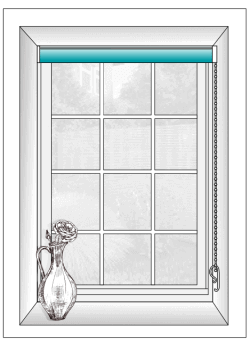
Outside the Recess - Exact fit blinds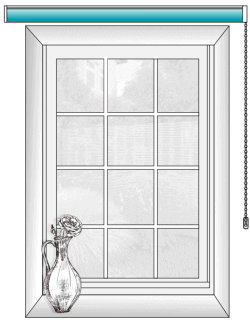
An exact fit blind means we won’t make any deductions to the width or drop measurements. Exact fit is the bracket to bracket measurement and is commonly found installed outside of a recess. The size you give us is the size your blind is made to.
A standard window is the easiest to measure for a venetian blind as it has no angles or changes to the shape inside or outside of the recess. If you want your blind to hang outside the recess, measure the height and width but be sure to add some overlap to reduce light leakage. This overlap should be about 70mm at the top and bottom and 50mm each side, ensuring you suffer no dazzling strips of sunlight once your blind is happily installed. Please select the ‘exact’ size option when ordering.
Angled Bay
-
Venetian Blinds
Has it been keeping you up at night? Knowing you need to measure your bay window for a venetian blind, but not knowing how to do it. All those angles, all that potential to get it so very wrong. What are you going to do? Read the simple instructions and tackle the project head on – it’s easier than you think! Now take note of the type of venetian blind you're measuring for as the protrusion (the thickenss of the blind) differs and you'll need this size when you come to deduct it.
50mm Real Wood & Faux Wood Venetian Blind Protrusion: 60mm
35mm & 25mm Real Wood & Faux Wood Venetian Blind Protrusion: 50mm
Aluminium Venetian Blind: 55mm -
Steps:
- Step 1: First, you need to measure the blind’s protrusion. This is to find out how far the blind needs to be away from the window. See above to find out how far your venetian blind’s headrail will protrude and take a look at the window and check for any window handles or vents or anything else sticking out that would catch the blind on its way up or down. Measure how far these protrude and add it to the protrusion. This figure is called P (see, that GCSE algebra did come in handy!).
- Step 2: Using a ruler, place two pieces of card edge-to-edge and measure the blind’s protrusion (P). Draw a line on both to indicate this.
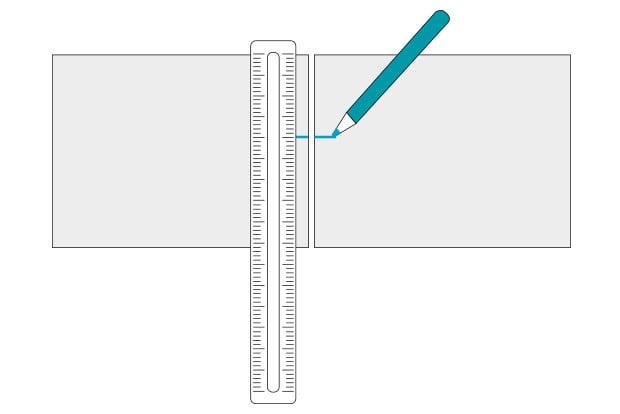
- Step 3: Here’s the clever part: slide the paper towards each other on the windowsill, heading into a corner. Keep the edges flat against the sill. When the two protrusion marks meet, stop.
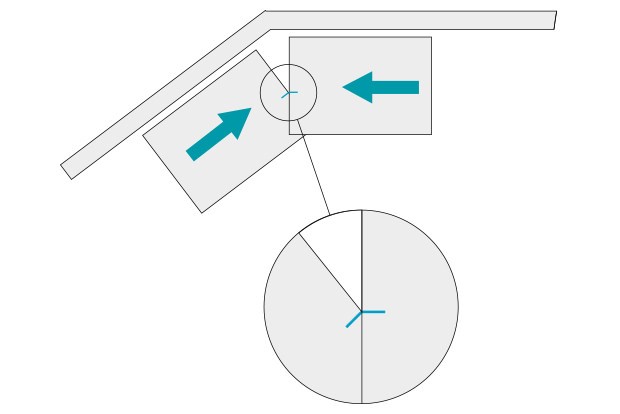
- Step 4: Grab your pencil again and mark on the windowsill the point where the lines meet. Do this for any other angled parts of the bay window.
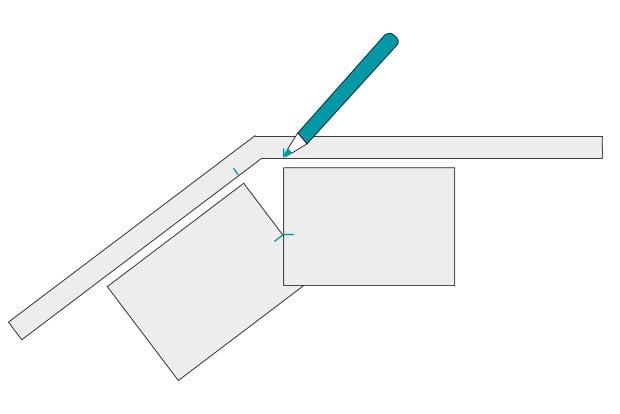
- Step 5: Measure across from one mark to the next, going from closest line to the next closest line, this will show you the width of the blind that you will need to order from us.
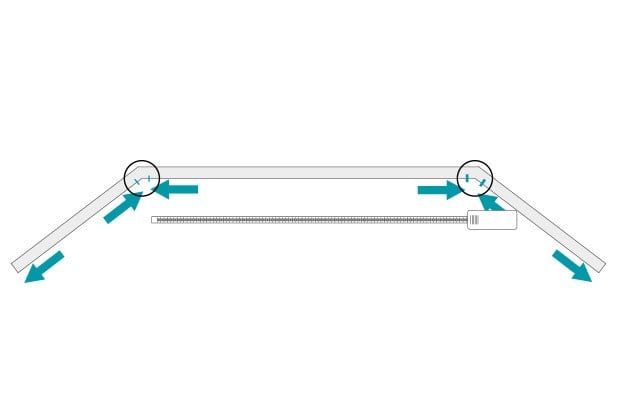
- Step 6: Measure from the drop (listed on our website’s product specifications) to where you want the blind to end, which will most likely be your windowsill.
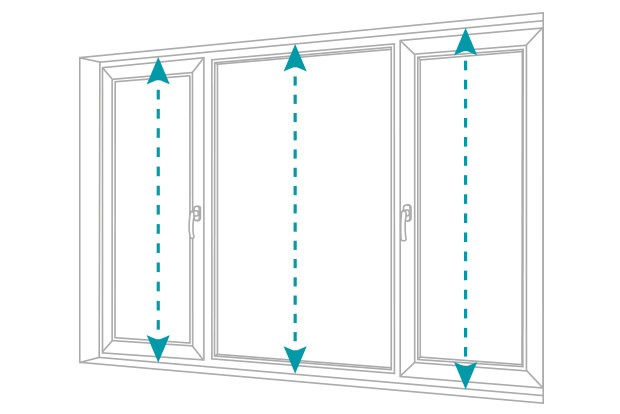
- Step 7: Now, armed with these measurements, you’re ready to order your blind! Enter them into the product page and proceed to the checkout! Finally, go make yourself a celebratory cup of tea, you’ve just found the size of the blind you need for your angled bay window.
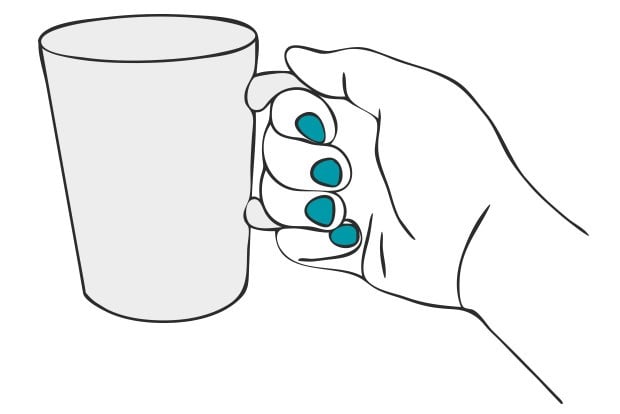
An angled bay window is a bay window that has the windows joining at an angle, which need to be accounted for when measuring for blinds.
Box Bay
-
Venetian Blinds
Before we start, you will need to make one of the following deductions from your measurements BEFORE you enter them into our website and buy your blind. For box bay window blinds, DotcomBlinds WILL NOT make deductions once we receive the order.
If you are planning to top fix the blind then you will need to make the following deductions: deduct 55mm if it is an ALUMINIUM venetian blind. Deduct 50mm if you are ordering a 25mm or 35mm WOODEN VENETIAN BLIND or deduct 60mm if you are ordering a 50mm WOOD OR FAUX WOOD VENETIAN BLIND. These deductions are the bracket protrusion of the blind, meaning you can install the blinds closer together by accounting for the blind it is being butted up against.
Please take your measurements in three places because bay windows are renowned for movement, and widths can vary. If you get a different width measurement, go with the smallest and if you get a different drop measurement, go with the longest.
First things first, choose which kind of blind fitter you are: Rookie, Professional or Maverick? Depending on which blind fitter you are defines how you measure and fit your blind.
Rookie:
- A blind is going to run across the front, almost corner to corner, with the side blinds butted up to the front blind. Measure the full width (wall to wall) of the bay window and order this blind as recess fit.
- Measure the side windows from wall to the end of the window, deduct the relevant bracket allowance and order the side blinds as exact fit. These deductions allow space for the blind at the front. Head back to the top of this guide to find out which measurement to deduct based on the way type of venetian blind you intend to fit.
- That is all you need to do, so put your feet up and enjoy the view from your box bay window, that blind you just ordered will be arriving soon, and then you’ll be proudly staring at your handiwork.
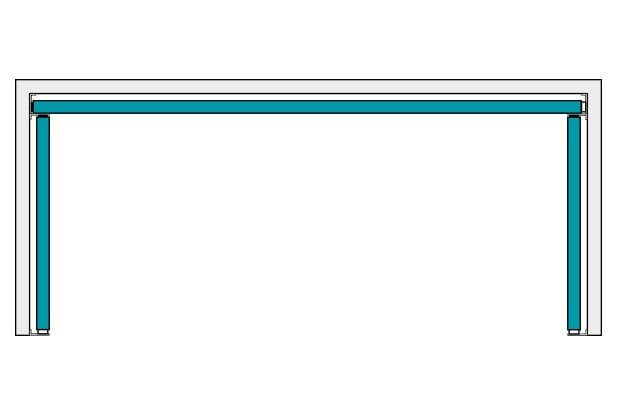
Professional:
- Always pushing your DIY limits and pursuing perfection, you’ll enjoy fitting blinds in your box bay window the professional way.
- Firstly, make sure this will work for your window. Measure from the corner of the bay to the start of the glass pane on both sides, and if either measurement is less than 70mm, then sorry buster, you’ll have to sit this dance out – you run the risk of not quite covering all of the glass.
- The aim of this method is to leave a square void in the corners, so that the blinds meet in the corners but don’t overlap. Measure all three sections directly into the corners, deduct the bracket allowance measurement from each blind (double for the bracket allowance measurement for the front blind) and order them all as exact fit. You will find the bracket measurements at the top of this guide.
- Now, with that task in hand isn’t there a bookshelf you need to hang?
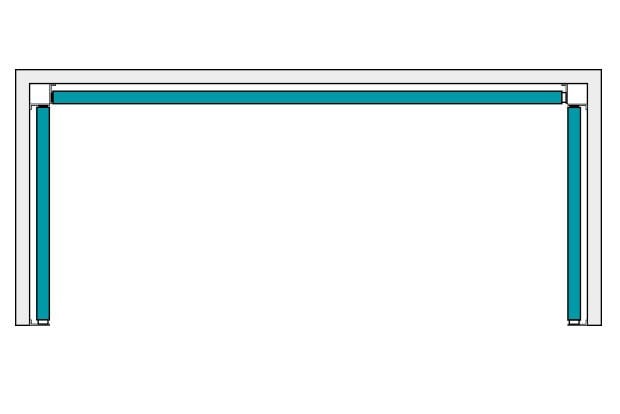
Maverick:
- You’re unconventional, you don’t do DIY by the book, you want your fitted blinds to reflect your unique nature. Or, you simply have very small side windows in your box bay window and you’ve chosen this option out of practicality. Welcome all.
- With small side windows, you can often be left with a measurement (after the bracket allowance deductions) that is smaller than we’re able to make a blind. This option allows you to continue the side blinds into the corner with the front blind sitting between them. Measure the side blinds into the corner and order these as recess fit.
- Measure the front from corner to corner, but deduct the bracket allowance twice from the width. You’ll find the bracket allowance at the top of this guide. Job done.
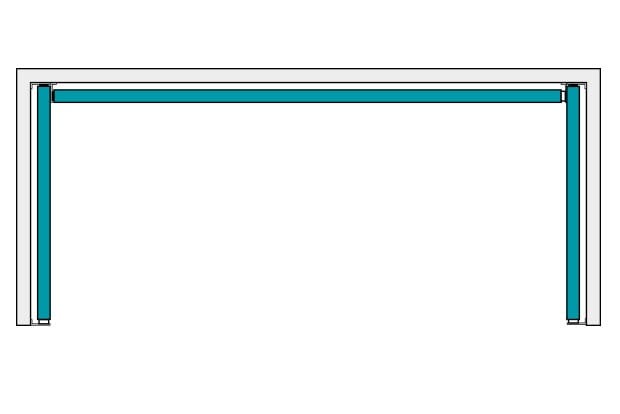
A box bay window is a three-sided bay window that sees the blinds join at right angles to each other.